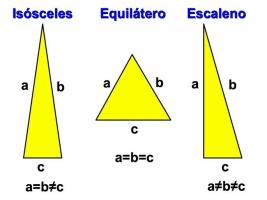Difference between population and sample
Population refers to the universe, set or totality of elements on which research or studies are carried out. Show It is a part or subset of elements that are previously selected from a population to carry out a study.
Normally, a sample of a population is selected for study, because studying all the elements of a population would be very extensive and impractical.
| Population | Show | |
|---|---|---|
| Definition | Universe of elements to be studied. | Selection of a part of the population that is going to be the subject of study. |
| Characteristics |
|
|
| goals | Analyze the data collected regarding the common characteristics shared by the elements for various purposes. | Study the behavior, characteristics, tastes or properties of a representative part of the population. |
| Examples |
|
For the study of the performance of students from five universities in a city in a specific subject, it is taken as sample 500 students randomly (100 from each institution) who are studying the same level so that the sample is representative. |
What is population?
The statistical population, also known as the universe, is the set or the totality of elements to be studied.
The elements of a population are made up of each of the associated individuals, because share some feature in common.
The statistical population can be a collection of real people, places, or things. For example, teenagers in a town or the possible uses of sugar in recipes.
As it is very difficult to carry out a study with all the elements that make up a population, especially if is considered an infinite population, a representative sample of it is taken to perform the studies.
Types of populations
The population can be classified as follows according to the number of individuals that make it up:
- Finite population: it is one that can be counted and its members can be studied more easily. For example, the number of people enrolled in a gym.
- Infinite population: they are immense populations where it is very difficult to count their members, so it is usually take into account only a portion of it when conducting a study, thus selecting a show. For example, the number of grains of sand on a beach.
- Real population: they are groups of tangible members. For example, the number of animals in a zoo.
- Hypothetical population: they are possible populations that can be studied in the event of an eventuality. For example, the number of preterm births.
What is sample?
The sample is a representative part of a population where its elements share common or similar characteristics.
It is used to study the population in a more feasible, because it can be easily accounted for. When a study is going to be carried out on the behavior, properties or tastes of the total of a specific population, samples are usually taken.
These studies that are carried out on the samples serve to create norms or guidelines that will allow taking actions or simply knowing more about the population studied.
The sampling it is a research tool that, when used properly, allows obtaining specific conclusions and avoiding biased results.
The main advantages of using samples is cost reduction, since it reduces the elements to be studied and can be done in less time.
The most important factors in sampling are the representativeness, so that the elements have common qualities depending on the purpose, and the randomness when selecting items to avoid a flawed sample.
Sample types
There are different types of techniques to make a sample.
Random sampling
It is a technique that offers the same possibility to the elements to be selected, by being taken at random. The types of random sampling are:
- Simple random sampling: items are chosen from a list at random. It works most effectively when the universe is small and homogeneous.
- Systematic sampling: the first element is chosen at random and then the remaining elements are chosen at constant intervals.
- Stratified sampling: It is done by dividing the population into parts or strata that respond to established characteristics and then the individuals to be studied are randomly chosen.
- Cluster sampling: the population is divided into heterogeneous groups and these in turn are subdivided into homogeneous groups with common characteristics to be studied as required by the researcher.
Non-random sampling or by intentional selection
It is chosen based on the information management of the elements to be studied, so the representativeness of the sample can be subjective. In this case, there is a risk that the results will be biased.
When only one of the studies is not sufficient because the population to be studied is very large, two or more types of sampling can be used.

Doctor in Biochemistry from the Venezuelan Institute of Scientific Research (IVIC), with a degree in Bioanalysis from the Central University of Venezuela.


